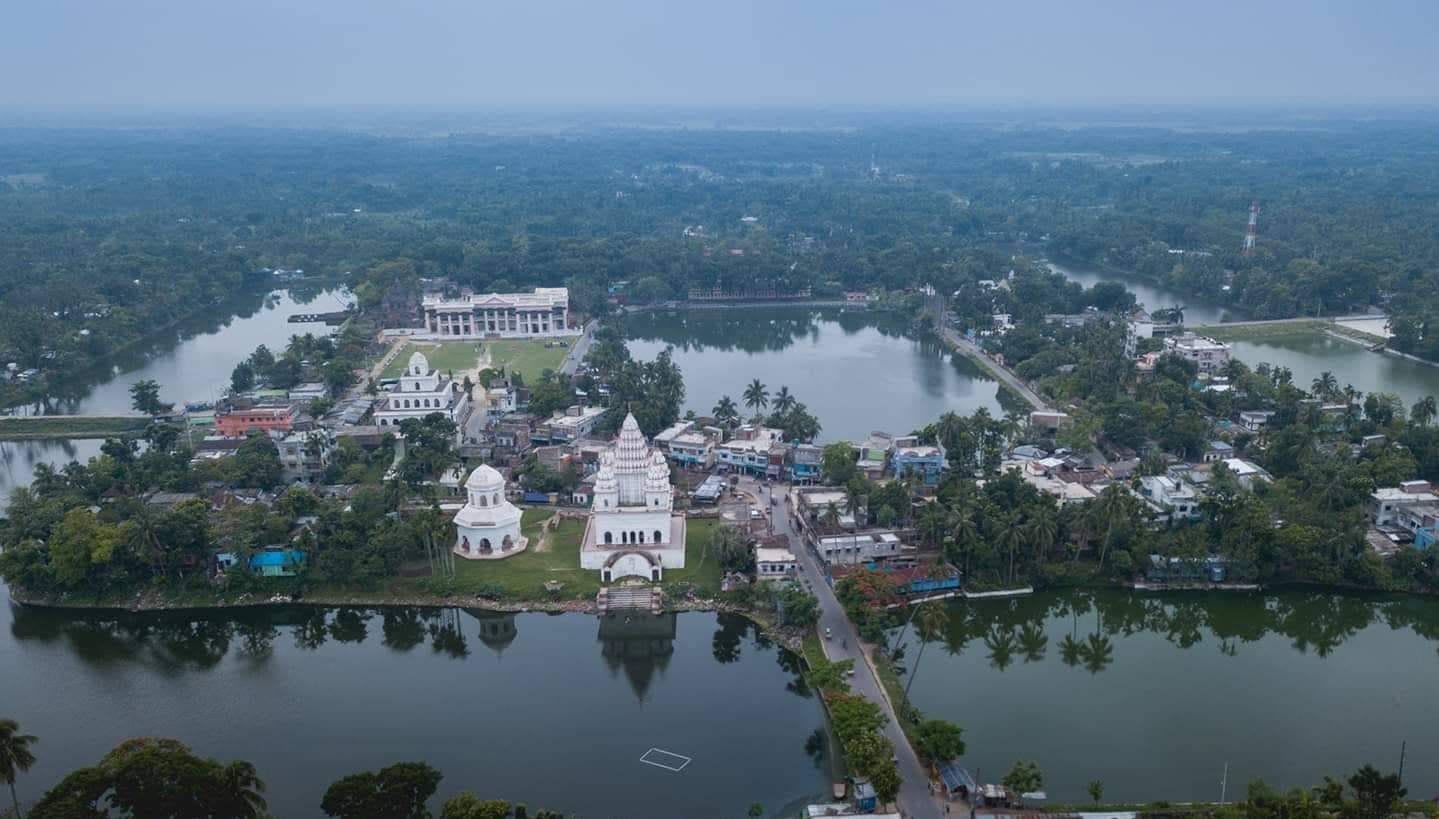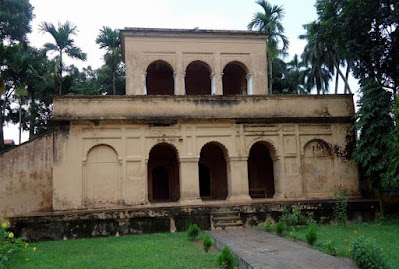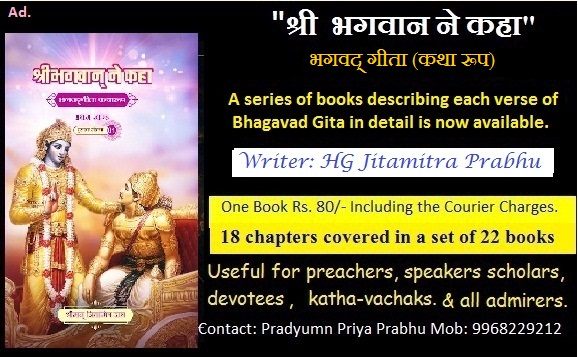Puthia Temple Complex, Bangladesh
 |
| Puthia Temple Complex |
Puthia Temple Complex is a cluster of centuries-old Hindu temples some 23 kilometres to the east of Rajshahi
city in Bangladesh.
The temples were built by
Hindu Zamindars of the Puthia Raj family. They were noted philanthropists and
followers of Vaishnavism mainly. Some 17
large and small temples still exist at Puthia now. The temples are laid out
around lakes Shyam Sarobar & Gobind Sarobar with a sprawling lawn.
|
| ||
In
the palace courtyard lies another impressive offering to the divine lovers
Radha and Krishna which is called Bara
Govinda temple. Placed on a high stone carved platform, this gigantic
brick built structure is famous for its exquisite terracotta ornamentation.
The outer wall of the temple has gracefully depicted the legends of Ramayan,
Radha-Krishna. It is assumed from its architectural style that it was built
in the second of half of 17th century. |
|
| ||
The
palace courtyard is studded with many small beautiful and exquisite
terracotta shrines belonging to many deities. Just a few metres across, beside the treasury house of the palace, situated a complex of four temples. These four historic temples are Boro Ahnik temple, Chhoto Ahnik temple, Chhoto Govinda temple and Gopal temple. Chhoto Govinda temple is believed to date to 1790-1800s period. |
|
| ||
Chhota Ahnik Mandir : Its inner are highly decorated with terracotta plaques depicting Radha-krishna-Balram legends, the episode of Ramayana and floral motifs like the Bara Govinda Mandir. The whole structure is covered by a do-chala roof with curved cornice. The date of construction is unknown to us. But it is assumed that it may be erected during the last of 18th or the first decade of the 19th century. |
|
|
||
|
Jagannath
Temple within the complex. |
| ||
Gopal
Mandir : It is a flat roof Dalan temple, situated near the Chhota Govinda
Mandir also known as Radhakanta Mandir. This south facing and two storied
building is placed on a high platform. There is a staircase on the west to
reach the platform. It is a very simple structure. Structurally it may be
called one ratna temple. Inner and outer wall surfaces of the whole structure
are covered with plaster only. It is the building of 20th century. |
|
|
||
|
On
the other side of the lakes, there are two massive but a bit isolated
temples. One is called temple of Tara and
another is temple of Shiva. The first one is almost destroyed and engulfed by
trees and shrubs. However, the latter is well preserved and highly revered by
the Hindus as it is considered as the largest Shiva temple of Bangladesh. |
 |
| Puthia Temple Complex |
















